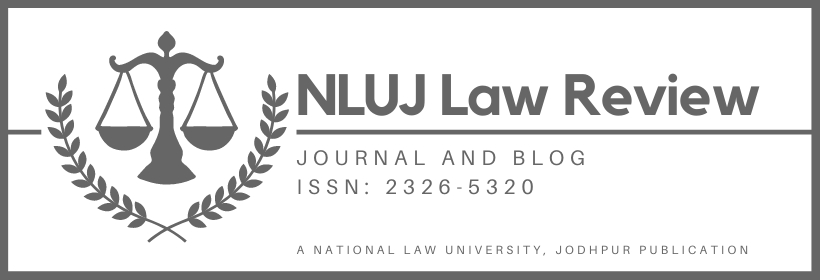The newest fad in the market today is of Non-Fungible Tokens (“NFTs”). They are essentially a certification of ownership of cryptoassets, and like cryptocurrencies operate using the blockchain technology. Furthermore, presently trading in NFTs is possible only through cryptocurrencies. However, that is where the similarity between cryptocurrencies and NFTs end. Cryptocurrencies are exchangeable or “fungible” while each NFT is unique and therefore, cannot be exchanged the way cryptocurrency can be, thus giving rise to the term “non-fungible”. NFTs may also represent physical assets thereby enabling exchange of physical assets on a digital marketplace. NFTs can represent a broad range of things – from an artwork, to a GIF, to trading cards and even virtual real estate. And even though the basic characteristic of a digital creation is an infinite supply, NFT provides an ownership of a particular digital creation. The basic idea behind this is to cut off the infinite supply of the digital creation thereby raising the value of the digital creation. While multiple copies of that artwork may exist on the internet, the NFT owner has ownership of the original artwork, and it is for these digital “bragging rights”, an exorbitant amount of money is paid.
Crypto-trading platforms such as WazirX, Zebpay, etc., have already launched their own virtual NFT marketplaces in India. With NFTs penetrating the Indian market and their sales growing at record pace, it is important to analyse them from a legal standpoint.
The Cryptocurrency Conundrum
Perhaps the biggest obstacle in NFT trading is the obscurity surrounding the legal validity of cryptocurrencies in India because as stated earlier, NFTs are tradeable only in cryptocurrencies. Further, all Indian platforms which have launched trading in NFTs till date are cryptocurrency exchanges. Even though cryptocurrencies are not illegal in India, the Banning of Cryptocurrency & Regulation of Official Digital Currency Bill, 2019 advocates a complete ban on the use of cryptocurrency. It also provides for a fine or/and imprisonment for those who deal in cryptocurrency.
On the contrary, the Supreme Court of India in Internet and Mobile Association of India v. Reserve Bank of India, while striking down the April 2018 RBI circular directing all regulated entities to refrain from dealing in cryptocurrencies, opined that the impugned circular was unreasonable and hence violative of Article 19(1)(g) of the Constitution of India. Furthermore, early 2021 saw a drastic change in the approach of the government in dealing with cryptocurrencies with the Finance Minister stating that the government was not considering a complete ban on cryptocurrency and that it will allow windows for people to do experiments. RBI also issued a circular directing the banks to not rely on the 2018 circular since it was struck down by the Supreme Court of India.
What emerges out of this discussion is that there is absolutely no clarity as to the legal sanctity of cryptocurrencies in India which consequently makes trading in NFTs riskier.
Can NFTs be classified as Securities?
As discussed, presently no law bans trading in NFTs in India. The legality of NFTs in India is uncertain and adding to the chaos is the belief that trading in NFT is not permitted under the Securities Contract (Regulation) Act, 1956 (“SCRA”). There is no separate legal framework for NFTs in India. This has led to polarisation among the scholars as to the classification of the NFTs. Some opine that NFTs are contracts whereas some state NFTs to be a derivative. If the latter is true, in essence it would mean a ban on trading in NFTs in India.
Section 2(ac) of SCRA which defines “derivative” provides that derivative also includes a contract which derives its value from prices or index of prices of underlying securities. If NFTs are held to be derivatives, then they cannot be traded on virtual platforms by virtue of Section 18A of SCRA which provides that contracts in derivate shall be legal only if they are traded on recognised stock exchange. Under such circumstance, the platform where NFTs are traded will have to apply for recognition as Stock Exchange with the Central Government.
As pointed out earlier NFTs are non-fungible, and it is this non-fungibility that separates them from other securities. Hence, if a particular NFT relates solely to an existing asset and it is marketed as an assurance for authenticity of the ownership of such asset, reckoning it as a security (derivative) would be improper. It should be rather governed by the general principles of contract. On the contrary, fractional NFTs (providing partial ownership interest in the NFT) which have come into existence due to exorbitantly priced NFTs, which most people cannot afford, may be termed as a security. Furthermore, if promises pertaining to return on investment are made then NFTs will resemble a speculative investment rather than a digital collectible, and therefore, could be deemed as a security in India.
NFTs in the United States:
NFTs in US, like India, are unregulated and the legal position is in a confusing state of affairs. A petition was filed with the Securities and Exchange Commission (“SEC”) on 12 April 2021 recommending the regulator to enact a framework for the regulation of NFTs. Apart from this, there is no formal document pertaining to NFTs. However, SEC officials have opined that dealing in NFTs can amount to breaking of law because NFTs can often take the shape of ‘investment contract’.
At this juncture it is pertinent to note the much talked about ‘Howeytest’ as laid down by the Supreme Court of the United States in SEC v. W. J. Howey Co. The definition of ‘security’ under US law also includes ‘investment contract’ among many other things. The Supreme Court of the United States opined that an investment contract exists when there is investment of money in a common enterprise wherein profits are expected through the efforts of others. The most contentious aspect here is ‘efforts of others’ which is nothing but third-party efforts to realize an asset’s investment potential. Whether the profits are a result of others’ efforts depends on a case-to-case basis. To illustrate, NFT derived from a GIF or a painting is not a security because the GIF/painting is in its final stage and hence its value is not dependent upon ‘efforts of others’. As against that, if a real estate developer has financed a particular project through the issue of NFTs (representing a floor or unit), these NFTs would be securities under the Howey test because here the purchasers of the NFTs expect a return based on the efforts of the developer.
Along with the issues discussed above there are various other legal and regulatory challenges which come along with the advent of NFTs. The foremost of these regulatory challenges are those related to intellectual property rights, right to privacy and money laundering. In the next part of this blog the authors will focus on how NFTS maybe a tool to launder money.
NFTs: A new-age tool for Money Laundering?
There are three main steps to launder money – (i) placement, (ii) layering and (iii) integration. Arguably, the most crucial and the most complex aspect of money laundering is to ensure that source of the money becomes untraceable, i.e., layering the money. Historically, buying those legal assets whose value is difficult to determine, such as art, has been the preferred choice for criminals to layer their ill-gotten money. Plato once said, “the beauty lies in the eyes of beholder”, and this is exactly why buying art is the preferred vehicle of criminals to layer their ill-gotten gains, simply because of the fact that value of art is fundamentally subjective. Further, transactions involving art also provide much needed anonymity and privacy to criminals. There is also a lack of regulations wherein most art dealers neither having to report transactions nor verify their clients. With the emergence of NFTs, the problem regarding money laundering through art is bound to worsen.
Firstly, NFTs can provide complete anonymity. The technology on which NFT operates is blockchain, on which every transaction involving a cryptocurrency is publicly recorded. For the creation of NFTs, blockchain is a critical technology. It employs encryption to link blocks together to create a growing list of records. Each block is linked to the previous block by a cryptographic hash, or a string of characters that uniquely identifies a piece of data. A Merkle tree is a data structure that stores the transaction records of a series of blocks. This enables for quick access to previous records. A ledger of sorts is maintained. While through this ledger it is theoretically possible to work backwards, identify wallets through which the cryptocurrency passed, and then associate those wallets with people by IP tracing, cryptocurrency tumblers can make this task extremely difficult to carry out. A ‘tumbler’ essentially mixes identifiable or traceable cryptocurrency with non-traceable ones so as to make the original source of the cryptocurrency unidentifiable. In the recent case of USA v. Harmon, the defendant has been charged of conspiring to launder monetary instruments through operating a bitcoin tumbler known as ‘Helix’. The service provided by this tumbler had been specifically advertised as a way to camouflage transactions from authorities. Further, people buying NFTs have pseudonyms and their profile lacks anything through which they can be identified. For example, Vignesh Sundaresan who bought the most expensive NFT at $69 Million bought it anonymously and only later chose to reveal his identity.
Secondly, the pricing of NFTs can be subjective with no proper parameters or criteria. Art, other than cryptoart, even though can be valued subjectively, it has a few parameters such as the antiquity of the painting, condition, rarity, etc., based on which at least a price range can be determined. However, recently an animated flying cat with a pop-tart body was sold for almost $600,000. There are no parameters to determine the value of this flying cat and other similar NFTs and therefore it becomes convenient for money launderers to buy NFTs at exorbitant prices making it very easy to launder large sums of money.
Conclusion: The Way Forward
In addition to the problems highlighted above there is also a question regarding ownership rights in NFTS. When contemplating the intellectual property implications of NFTs, it is vital to understand the difference between ownership of the NFT and ownership of the intellectual property that underpins it. The rights given by an NFT seller are determined by the rights transferred via a license or assignment, which might differ from one NFT to the next. And therefore, what is required is a firm stance of the legislature on this point through a definite statutory framework.
NFTs are the newest class of cryptoassets. And as highlighted above in certain situations NFTs can act as securities which may be traded on peer-to-peer decentralized exchanges. India also needs to take lessons from countries like Singapore, Canada, Japan, and Switzerland which offers a balanced legal and regulatory environment. Cryptocurrency legalisation is essential for a smooth trading of NFTs in India. Unless and until, there is a firm decision as to the validity of cryptocurrencies in India, NFT trading is risky. Secondly, a clarity from the government as to whether NFT amounts to derivative or not is inevitable.
Financial Action Task Force (the global anti money laundering watchdog) taking the notice of NFTs and publishing draft guidance is a clear signal that NFTs, if unregulated, may be used for nefarious purposes. If NFTs are classified as legal in India changes will be required in the Prevention of Money Laundering Act, 2002 as well as Antiquities and Art Treasures Act, 1972. Further taking guidance from “Fifth Anti-Money Laundering Directive” issued by the European Union may also be prove to be helpful. In fact, a separate legislation to combat money laundering through art market, where NFTs are included in the definition of art seems to be the most desirable option.
This article has been written by Dharmvir Brahmbhatt and Devarsh Shah, students at Gujarat National Law University, Gujarat.



